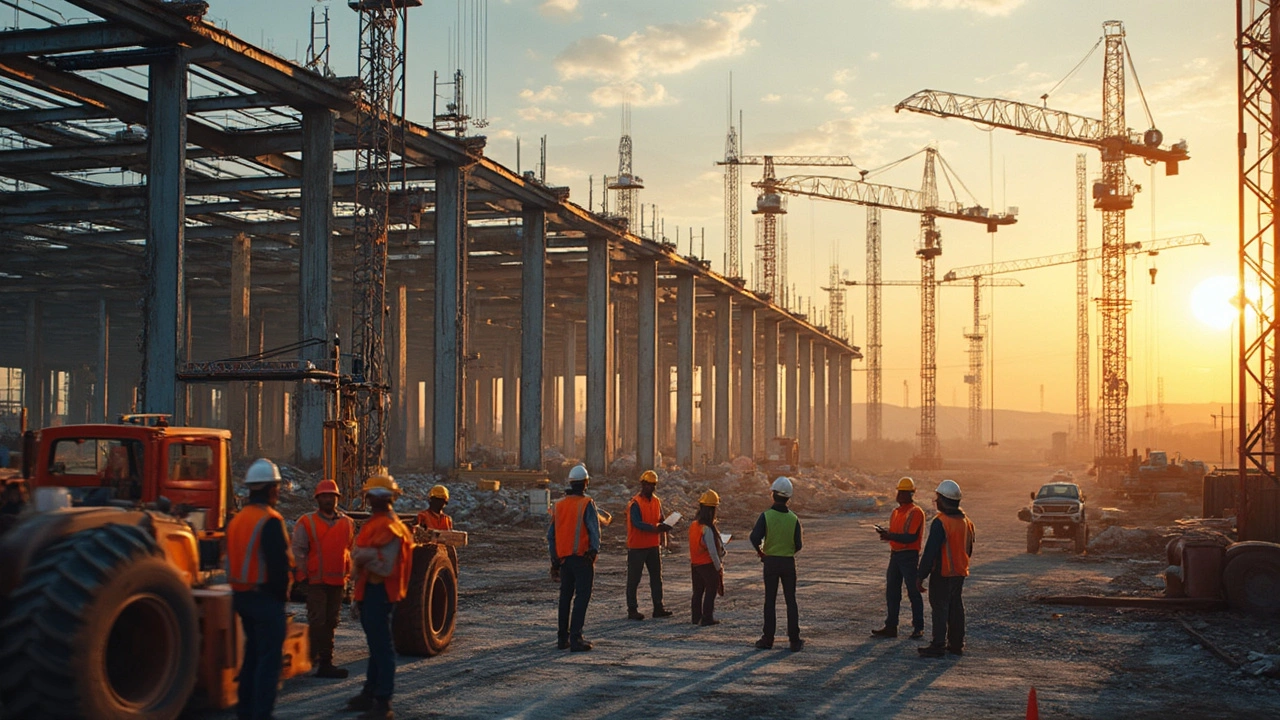Warehouse Construction: Build Smart, Efficient Storage Spaces
Thinking about a new warehouse? The right design can save you time, money, and headaches down the road. Below you’ll find the practical steps every business should follow, from picking the right site to adding the tech that keeps inventory moving.
Key Steps in Planning Your Warehouse
First, map out your business goals. Ask yourself how much stock you need to hold, how fast you turn items over, and which products require special handling. Those answers shape the size, height, and floor layout you’ll need.
Next, scout locations. Look for easy road access, proximity to suppliers and customers, and enough space for future expansion. Don’t forget local zoning rules and tax incentives – they can cut costs dramatically.
Once you have a site, sketch a floor plan that separates receiving, storage, picking, and shipping zones. Keep high‑traffic lanes wide enough for your biggest trucks, and place the most popular picks near the packing area to cut travel time.
Don’t ignore safety early on. Include clear aisles, proper lighting, and fire‑suppression systems that meet Indian regulations. A well‑planned safety layout reduces accidents and insurance premiums.
Choosing Materials and Technology
The floor is the foundation of every warehouse. Concrete with a smooth finish handles heavy pallets and forklift traffic, while epoxy coating adds durability and easy cleaning. If you store temperature‑sensitive goods, insulated panels and vapor barriers become essential.
Racking systems should match your product mix. Pallet racking works for most bulk items, but flow racks or carton flow shelves speed up FIFO picking for fast‑moving SKUs. Remember to leave room for mobile racking if you plan to reconfigure space later.
Investing in a Warehouse Management System (WMS) pays off quickly. A good WMS tracks inventory in real time, guides pick routes, and integrates with transport management software. Even a basic cloud‑based solution can reduce errors by 30 %.
Automation doesn’t have to be full‑scale robots. Conveyor belts, lift tables, and dock levelers improve efficiency without huge upfront costs. Evaluate each option against your order volume – sometimes a simple belt from receiving to shipping cuts labor by half.
Energy costs matter too. LED lighting, solar panels on the roof, and motion sensors lower bills and earn green credentials. Many Indian states offer subsidies for renewable installations, so check the latest programmes.
Finally, set a realistic timeline and budget. Typical warehouse builds take 6‑12 months, depending on size and complexity. Include a contingency fund of 10‑15 % for unexpected site conditions or material price swings.
When the walls go up, keep the conversation open with contractors, architects, and your operations team. Regular walkthroughs catch mistakes early, so you stay on schedule and on budget.
Building a warehouse isn’t just about brick and steel – it’s about creating a space that moves goods smoothly and scales with your business. Follow these steps, pick the right tech, and you’ll end up with a facility that saves you money and keeps customers happy.
Who Builds Amazon Warehouses: Construction Companies, Contractors, and Key Players in the USA
Amazon warehouses don't just pop up overnight—behind every giant facility is a web of construction companies, project managers, and skilled workers making it happen. This article breaks down exactly who builds Amazon's warehouses in the USA and how the process works, from massive contracts to clever technology. You'll get inside info on the biggest players in the industry, real costs, and what it takes to complete these enormous projects faster than most traditional builds. Get ready for a behind-the-scenes look at the world of Amazon warehouse construction.
Read More